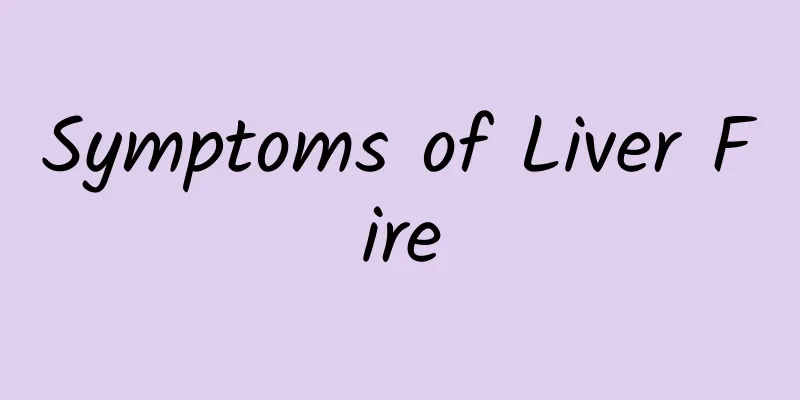What are the scientific methods for treating neurodermatitis?

|
Neurodermatitis is a relatively common skin disease. The main symptoms include skin itching and skin moss. The reasons behind it are more complicated. For example, stimulation by chemical substances, abnormalities of the human endocrine system, or mental abnormalities may all lead to this skin disease. So what are the current treatment measures? 1. Treatment The purpose of treatment is mainly to relieve itching and prevent patients from scratching due to itching, which will further aggravate the condition. 1. Systemic treatment Antihistamines, calcium supplements, etc. can be used to relieve itching symptomatically, supplemented with oral vitamin B group; sedatives can be used for severe itching; for generalized rash, procaine intravenous blockade or combined use of tripterygium wilfordii drugs can be used. 2. Local treatment You can choose to use glucocorticoid ointment, cream or solution for external use. For those with hypertrophy, you can seal the area or use 10% black bean distilled oil ointment for external use. Refractory skin lesions can be treated with local intralesional injection of triamcinolone acetonide injection. 2. Prevention 1. Relax your nervousness Patients should remain optimistic, avoid excessive emotions, especially pay attention to avoiding emotional tension, anxiety, and excitement, strive to live a regular life, and pay attention to the combination of work and rest. 2. Reduce stimulation The most important reason why neurodermatitis recurs and fails to heal, and why the skin locally thickens and becomes rough, is scratching caused by severe itching. Therefore, patients should have confidence that the disease can be cured and avoid using methods such as scratching, rubbing, and washing with hot water to relieve the itching. This is an important link in breaking the vicious cycle mentioned above. 3. Adjust your diet Limit alcohol and spicy food, keep bowel movements regular, and actively treat gastrointestinal lesions. 3. Differential Diagnosis 1. Chronic eczema It is mostly transformed from acute eczema, with a tendency to exudate during the course of the disease. The rash manifests as infiltrated hypertrophic macules and plaques, with no obvious lichenification and accompanied by severe itching. 2. Lichen planus The similarities with neurodermatitis are round or polygonal flat papules, which cause itching. The difference is that the flat papules in the former are larger than those in the latter, are purple-red, have a waxy luster, and Wicknam lines can be seen. Isomorphic reactions often occur in the forearm, extensor side of the lower leg, trunk, etc., in addition to mucosal damage (such as damage to the buccal mucosa and glans penis). The tissue pathology is specific. 3. Psoriasis Chronic localized hypertrophic psoriasis occurs on the extensor side of the lower leg and scalp. The base of the lesions is light red or dark red infiltrated and covered with silvery scales. Thin film phenomenon and punctate hemorrhages can be seen after peeling. Psoriasis lesions are common in other parts of the body. Patients feel no itching or slight itching. Histopathology has diagnostic value. 4. Pruritus It is more common in the elderly, often related to the season, and the skin lesions are secondary. 5. Primary cutaneous amyloidosis The skin lesions appear as sorghum to mung bean-sized brown hard papules. Sometimes the rash is arranged in a rosary-like manner along the skin texture. Histopathologically, amyloid protein deposition shows characteristic changes. |
<<: How is cardiomyopathy treated? That’s the scientific method!
Recommend
What to do if your lips get blistered due to inflammation? Recommended dietary therapy to reduce inflammation
Getting a fever is a common disease in our daily ...
What to do if kidney function is impaired?
Impaired kidney function will usually cause the p...
Can chronic prostatitis be cured?
Nowadays, the number of people suffering from chr...
What medicine is most effective in lowering uric acid?
High uric acid levels are often seen in gout. Gou...
Small blisters on the penis
Small blisters on the penis may be caused by infl...
What are the symptoms of eperythrozoonosis?
Eperythrozoonosis is an infectious disease caused...
Is Chinese medicine effective in removing freckles?
When people reach a certain age, many dark spots ...
What are the effects and functions of Danshen?
Salvia miltiorrhiza is also a common Chinese medi...
What to do if your arms ache from lifting things
Frequent moving of things or moving too many thin...
The impact of feeding peppers to babies
There are many dietary taboos for women who are b...
How to treat fungal otitis media? Check and treat in time
Fungal otitis media can cause pus discharge from ...
What are the small bumps under my lower lip?
Generally, small bumps under the lips are mostly ...
Joint pain the next day after drinking
Some people will feel severe pain in their joints...
Modern people should be careful of unhealthy blood! Manifestations of blood poisoning
Due to changes in the pace of life, work pressure...
Allergic urticaria symptoms
The symptoms of allergic urticaria are very compl...









